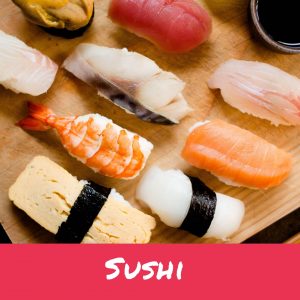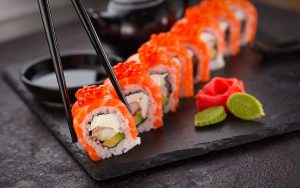Artful Delights: Sushi Restaurants
Sushi, a revered culinary treasure from Japan, has not only captured the palates of its homeland but has also enchanted gourmands globally. Sushi restaurants, from intimate traditional counters in Tokyo to contemporary fusion spots in New York, serve as platforms where centuries-old techniques meet modern interpretations, promising a gastronomic experience like no other.
Elegance in Every Bite
Tradition and Technique
Behind every piece of sushi lies an art form, perfected over generations. The meticulous preparation—be it the careful aging of fish, the perfect seasoning of rice, or the masterful knife skills—reflects a deep respect for the ingredients and the craft.
A Sensorial Journey
Sushi isn’t just about taste; it’s a multi-sensorial delight. From the visual artistry of each piece to the contrasting textures and flavors—silky fish, seasoned rice, and the subtle tang of wasabi—it’s a holistic experience.
The Sushi Spectrum
Nigiri
A testament to simplicity, nigiri consists of hand-pressed vinegared rice topped with a slice of raw or occasionally cooked fish or seafood.
Maki
Rolls wrapped in seaweed (nori) with rice, fish, and various fillings. Maki can range from simple tuna rolls to complex fusion creations with multiple ingredients.
Sashimi
A pure celebration of the ingredient, sashimi is thinly sliced raw fish, showcasing the freshness, flavor, and texture of each variety.
The Rituals of Dining
Omakase
An intimate dining experience where patrons trust the chef to present a series of plates, representing the freshest ingredients and the day’s inspiration. This is sushi dining in its most pure and personalized form.
Sake Complement
Sushi meals are often complemented by sake, a traditional Japanese rice wine. The nuanced flavors of sake can enhance and elevate the sushi dining experience.
Etiquette
From the art of eating with chopsticks to how one dips sushi into soy sauce, sushi dining is rich in rituals and etiquettes that add to the overall experience.
Conclusion
Sushi restaurants are sanctuaries of culinary craftsmanship. Through a blend of tradition and innovation, they present a world where every bite tells a story—a story of the ocean’s bounty, a chef’s dedication, and a culture’s reverence for nature.
FAQs
1. Is all sushi raw?
No, sushi encompasses a range of items, including both raw and cooked ingredients. For instance, eel (unagi) and shrimp (ebi) are often cooked.
2. What’s the difference between sushi and sashimi?
While both celebrate raw fish, sashimi is simply the fish without rice, while sushi includes vinegared rice.
3. Can sushi be vegetarian?
Absolutely! There are many vegetarian sushi options, such as avocado rolls, pickled radish (daikon) rolls, and more.
4. How should I start my sushi meal?
It’s customary to begin with lighter, more delicate flavors and progress to richer, fattier varieties. Starting with a white fish and moving towards tuna or eel is a common progression.
5. Is it rude to use my fingers to eat sushi?
Not at all. In fact, many traditionalists believe that sushi, especially nigiri, is best enjoyed when picked up with fingers rather than chopsticks.































